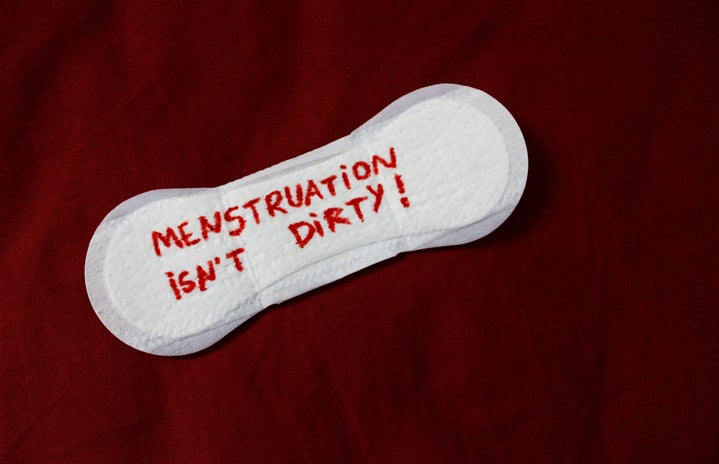Menstruation has always been a taboo in India, and even now in 2021, it still is. There, and throughout other countries in South Asia as well, menstruation is related to feelings of disgust, shame, and being dirty. This doesn’t only feed into the patriarchal culture and society that plagues India but also causes other detrimental impacts. In fact, it’s been heavily contributing to the—already disturbing—environmental crisis present there.
Menstrual products including pads and tampons are always presented as the only “dignified” product to “manage” one’s menstruation—whether that be through sole advertisements of these specific products, or the lack/inefficiency of health and sex education. As a result, there are massive amounts of discard waste left behind. As of right now, India has to deal with over 100,000 tons of menstrual waste alone, annually. In fact, one researcher at the University of Manchester estimated that by 2070, this number will have to drastically raise to 800,000 tons per year. She also estimated that the sale of menstrual products in India will reach a peak of 100 billion units. This environmental crisis will continue to grow at a rapid rate if India doesn’t establish viable waste management services, as well as develop a concrete waste disposal structure.
Furthermore, there are many people that discard their menstrual waste through other practices that Americans may not be as familiar with. These practices are founded on the same notions mentioned earlier—that menstruation is shameful and dirty and must be discarded in specific ways. Some of these practices include burning products, washing them (even if they’re disposable), and wrapping them in bags to then throw into communal toilets and the streets. These practices are often left out of studies conducted that analyze the environmental crisis going on in India. Without taking these practices into account, market growth projections show that menstrual product sales will reach 30 billion by 2030—resulting in 1,800 million tons of plastic and other types of waste per year. With the amount of waste from these other practices added on to this (already) a large amount of estimated waste, rates will reach unprecedented numbers much sooner than we are prepared for.
Furthermore, waste pickers—or people who collect waste from landfills, a majority of whom are from India’s lowest social/financial caste—sometimes avoid collecting menstrual products. This is due to the further sexist perceptions that menstrual blood is harmful to those who are exposed to it. They also believe that men should not handle menstrual waste, because menstrual waste is only “female waste”. Instead, waste pickers will burn menstrual products they see or throw them into open areas. This accounts for even more waste not being destroyed and more areas being polluted.
Another problem regarding menstruation in India is that these estimates (of menstrual waste) are solely based on the number of people who do have access to menstrual products. A national survey that only questioned girls from the ages of 15 to 24 found that a mere 48% of rural women and 78% of urban women use hygienic menstrual products. Because this survey only accounted for such a limited age range and only questioned people who identify as women (whereas, in reality, many people who don’t identify as women do menstruate), the total number of people who don’t have access to menstrual products throughout India is definitely much larger.
The same researcher at the University of Manchester believes that many steps can be taken towards bettering this environmental crisis, while also increasing access to menstrual products, and breaking down harmful social norms that enforce sexism. For example, she believes that a smart initial step would be to collect data on the use of menstrual products, in order to generate numbers and plans regarding waste and appropriate management processes. Training waste pickers on how to deal with menstrual waste can not only combat this environmental crisis but also aid in breaking down the widely accepted norms that menstruation is “shameful” and “dirty”. One step that needs to be prioritized in order to see this change in India is the national investment into waste management systems, like waste-to-energy incinerators. Without taking a few steps towards a solution, India is going to have to deal with mountains and mountains of unnecessary waste and a never-ending environmental crisis in the near future.



